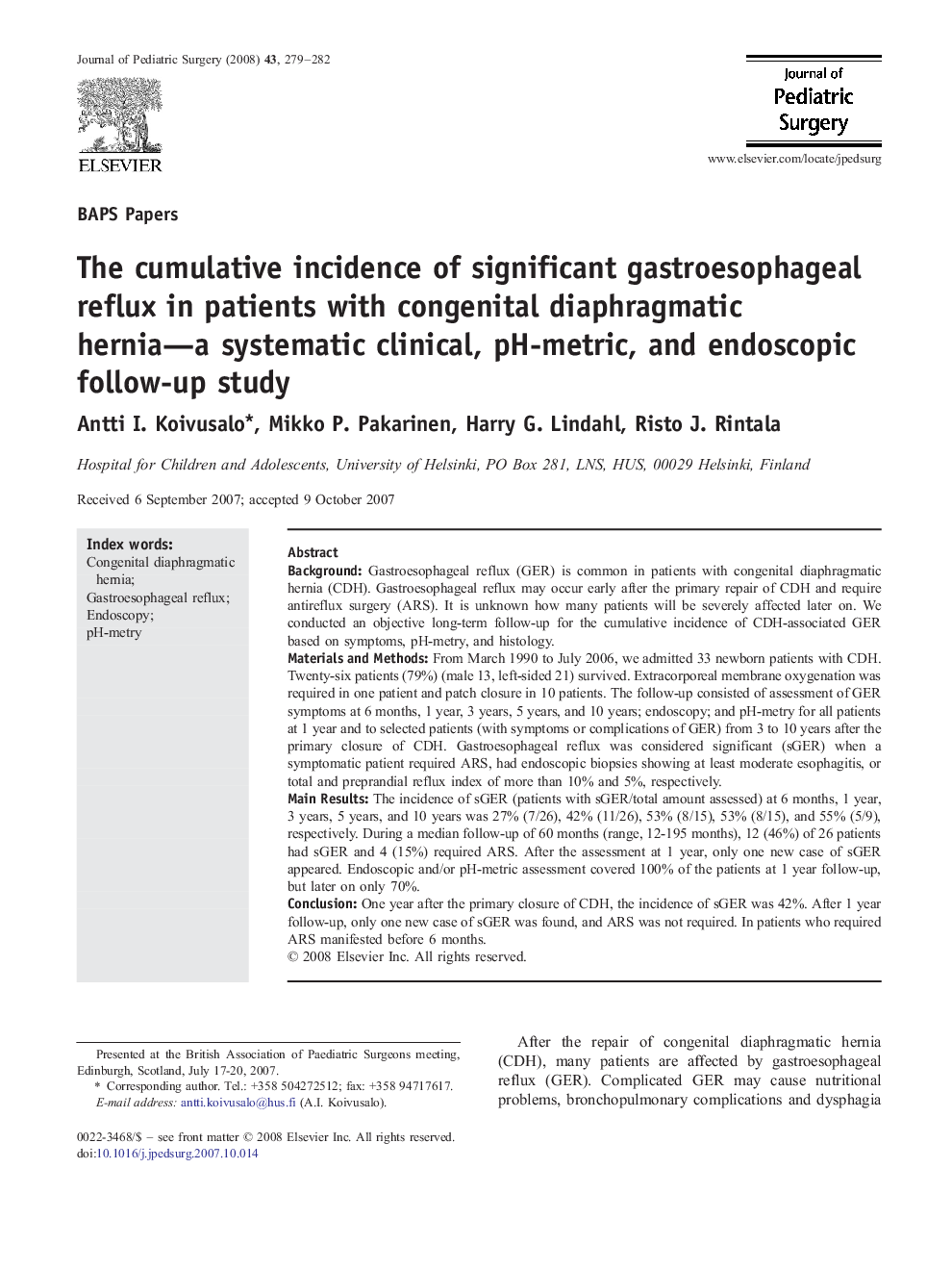| کد مقاله | کد نشریه | سال انتشار | مقاله انگلیسی | نسخه تمام متن |
|---|---|---|---|---|
| 4158944 | 1273819 | 2008 | 4 صفحه PDF | دانلود رایگان |

BackgroundGastroesophageal reflux (GER) is common in patients with congenital diaphragmatic hernia (CDH). Gastroesophageal reflux may occur early after the primary repair of CDH and require antireflux surgery (ARS). It is unknown how many patients will be severely affected later on. We conducted an objective long-term follow-up for the cumulative incidence of CDH-associated GER based on symptoms, pH-metry, and histology.Materials and MethodsFrom March 1990 to July 2006, we admitted 33 newborn patients with CDH. Twenty-six patients (79%) (male 13, left-sided 21) survived. Extracorporeal membrane oxygenation was required in one patient and patch closure in 10 patients. The follow-up consisted of assessment of GER symptoms at 6 months, 1 year, 3 years, 5 years, and 10 years; endoscopy; and pH-metry for all patients at 1 year and to selected patients (with symptoms or complications of GER) from 3 to 10 years after the primary closure of CDH. Gastroesophageal reflux was considered significant (sGER) when a symptomatic patient required ARS, had endoscopic biopsies showing at least moderate esophagitis, or total and preprandial reflux index of more than 10% and 5%, respectively.Main ResultsThe incidence of sGER (patients with sGER/total amount assessed) at 6 months, 1 year, 3 years, 5 years, and 10 years was 27% (7/26), 42% (11/26), 53% (8/15), 53% (8/15), and 55% (5/9), respectively. During a median follow-up of 60 months (range, 12-195 months), 12 (46%) of 26 patients had sGER and 4 (15%) required ARS. After the assessment at 1 year, only one new case of sGER appeared. Endoscopic and/or pH-metric assessment covered 100% of the patients at 1 year follow-up, but later on only 70%.ConclusionOne year after the primary closure of CDH, the incidence of sGER was 42%. After 1 year follow-up, only one new case of sGER was found, and ARS was not required. In patients who required ARS manifested before 6 months.
Journal: Journal of Pediatric Surgery - Volume 43, Issue 2, February 2008, Pages 279–282